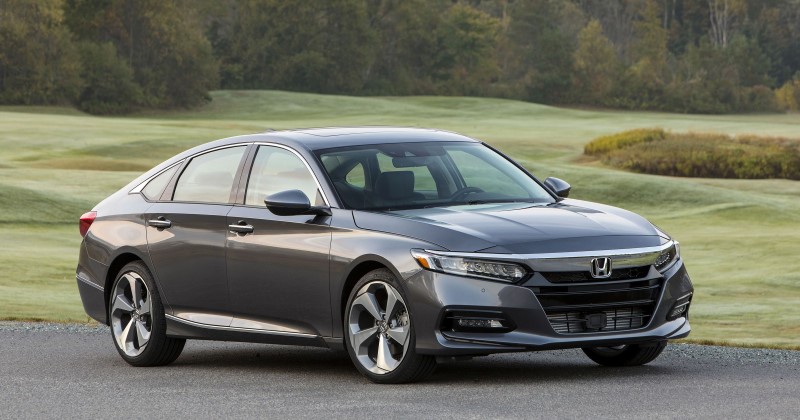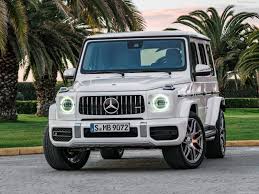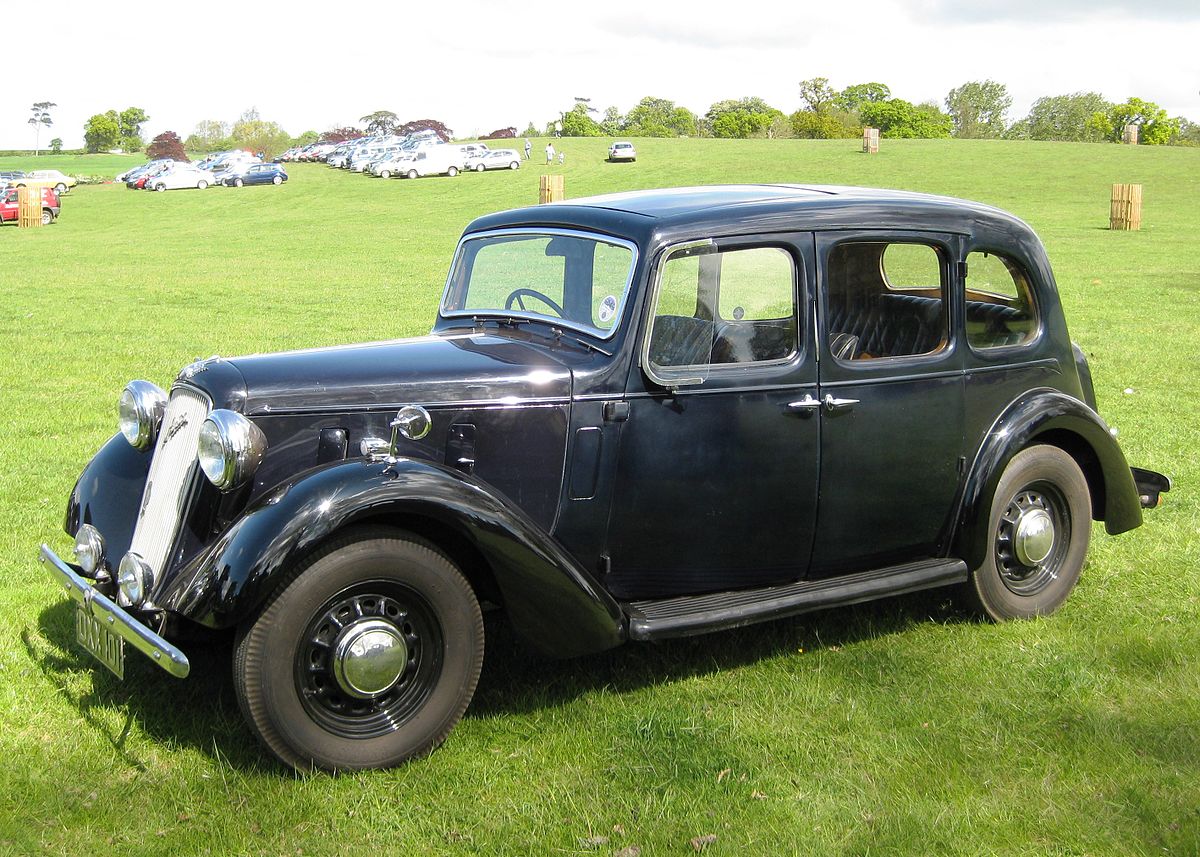Doors open for the public Wednesday 27 March and final day is Sunday April 7. The car that many are wanting to see is the new Honda Accord. I have yet to see it in the metal, but the photographs leave me rather underwhelmed. Not helped either with the car presented in unexciting grey.

New Honda Specifications (engines 1.5 Turbo and 2.0 Hybrid)
1.5L Turbo
1.5-litre DOHC 4-cylinder Direct Injection Dual VTC petrol engine
Maximum power of 192 hp @ 5,500 rpm, maximum torque of 260 Nm @ 1,500 – 5,000 rpm
Automatic transmission CVT
2.0 Hybrid i-MMD (3rd Generation)
2.0-litre 1,993cc Atkinson-Cycle engine
Engine output: Maximum power 145 hp @ 6,200 rpm, maximum torque of 175 Nm @ 3,500 rpm
Motor output (AC Synchronous Permanent Magnet Electric Motor): 184 hp @ 5,000 – 6,000 rpm, Maximum torque of 315 Nm @ 0-2,000 rpm
Combined output: 215 hp @ 6,200 rpm
Automatic transmission E-CVT (3rd Generation)
Mercedes-Benz G63 2019

4.0- litre V8 twin-turbo engine
577 hp, 627 Nm of torque
9-speed Automatic transmission
Acceleration 0-96 km/h in 4.6 sec
Of course there will be super cars on display, such as the Aston Martin Valkyrie AMR Pro. This little run-about will set you back 300 million baht so bring a large piggy bank.
6.5- liter V12 NA engine
Mid-engined, Rear wheel drive
Energy Recovery System produces total 1,100 hp and a top speed at 360 km/h
Will be displayed on 7 days.
F1 Season begins with a déjà vu
Valtteri Bottas (Mercedes) began his 2019 F1 season with an undisputed win. Leading practically from lights to flag, he also set the fastest lap for the extra point at the end of the race.
Following Bottas was the lead Mercedes driver Lewis Hamilton, who was never in the position of challenging Bottas for the lead.
Third place on the podium was claimed by Max Verstappen (Red Bull with Honda power) who looked as if he wanted to take Hamilton’s second place away from him, but he was never close enough to do just that, and an excursion late in the race ensured there was no challenge forthcoming.
The Ferrari team were never rampant at any stage, with team leader Sebastian Vettel only holding down 4th after his partner Charles Leclerc was even told by their pit wall to stay behind Vettel.
Remembering the left front wheel debacle last year for Haas, his team did it again and he had to stop out on the circuit once more. The Frenchman Romain Grosjean clearly unhappy.
The partisan crowd had Daniel Ricciardo (now in a Renault) to cheer for, but an argument over track space saw Ricciardo lose his front wing on the first lap and eventually retiring on lap 30.
Despite three DRS sections which were designed to facilitate overtaking, they were too short to let the chasing car get past. And the much touted new wings are so wide, the ends are out in the breeze and get knocked off in any close race duel, just the same as last year.
Results:
1 Valtteri Bottas Mercedes 1:25:27.325 26 points
2 Lewis Hamilton Mercedes +20.886s 18 points
3 Max Verstappen Red Bull Racing +22.520s 15 points
4 Sebastian Vettel Ferrari +57.109s 12 points
5 Charles Leclerc Ferrari + 58.23 10 points
The next round is in Bahrain March 29.
Bad cars that I should have forgotten
A friend of mine sent me an item about the 10 best cars in the past 50 years, and obviously there would be many different ideas from the enthusiasts. Unfortunately, for many people, they are only guessing, because just how many of you have actually driven a Porsche GT3, or even a Lamborghini?
I started driving in the 1950’s, and I also have to admit that it was my father’s car. The car? A 1939 Austin 12, made at the beginning of the war. Remember that war? That was the one the Germans lost, so they could come back later and take over Rolls-Royce, Bentley and Mini. What was left, like MG and Rover, ended up in China and even Jaguar ended up in India.
But back to Dad’s Austin 12. It was a large four door family saloon produced by the Austin Motor Company and was launched in August 1939 and produced until replaced in 1947 by the similar sized but larger engined Austin A70 Hampshire. With beam axles front and rear and mechanical brakes, it was more comfortable at rest than when in motion. Definitely one of the worst cars I have ever driven.

My first ‘real car’ which was mine and mine only, was a 1949 Austin A40 and was 10 years old when I took ownership. It was not a good buy, blowing up after two weeks. These days I would be more careful in pre-ownership checks, however it was repaired and did serve me for the next 10,000 miles without too many hiccups. But it was painfully slow.
The A40 was actually considered a power machine in its day. A 1.2 liter straight-4 OHV engine produced 40 bhp (30 kW) at 4200 rpm. It also had front coil sprung independent suspension but retained a rigid axle and semi elliptic leaf springs at the rear. The Girling brakes with 9 in (229 mm) drums were operated hydraulically at the front and mechanically at the rear.
An A40 tested by The Motor magazine in 1948 had a top speed of 70 mph (110 km/h) and could accelerate from 0-60 mph (97 km/h) in 37.2 seconds. Read that again – 37.2 seconds! To record those sorts of times, I think they probably had to use a calendar!
The next in my list of personal dreadful cars came from Italy, the home of GT motoring, Ferrari, Maserati De Tomaso and Lamborghini. Mine was not a GT car, but a Fiat 1100 D I purchased for five British pounds and it was a well-worn example. So worn that it used more oil than gasoline. I used to collect oil from my local garage that had been drained from better cars coming in for a grease and oil change. Remember those days? In its heyday (the first week after coming out of the factory the Fiat 1100 D boasted performance figures of: top speed 120 km/h (75 mph) (factory); acceleration zero-60 mph 27.2 seconds; 0- 100 km/h 30.2 seconds and 0- 1/4 mile 23.2 seconds. My rather more knackered version would go nowhere near those figures. Another very bad car. Incidentally, I never sold it. I parked it on Tilbury docks in London, threw the keys in the water and hopped on to the MV Adelaide Star where I was to be the ship’s surgeon for the voyage to Australia. It may even still be there? However, being left in light-fingered London, I doubt it.
Is collecting cars a disease?
Fanaticism is a common trait amongst car collectors all over the world. This can be seen at the Goodwood Festival of Speed and the Goodwood Revival, held each year in the UK.
These events attract up to 150,000 spectators daily, many of whom dress in period clothes for the Revival. There is a magic ingredient at these Classic car events – the ability to step back in time and re-live one’s own youth and that of one’s father and even grandfather. Modern mass-produced cars cannot produce such a feeling.
So what exactly is a “classic”? The terminology covers over 80 years of automobiles, and it is not rarity that makes for a classic. Austin 7’s are still plentiful, but if you own an Austin 7, you own a classic.
Likewise Fiat 500s and 600s, and in Thailand in the early 1950s, the local agent must have made a killing, with Fiat 1100s still around, quietly rusting in peace (RIP). If nothing else, age has elevated a humble passenger car to become a classic.
I race a classic car, a 1973 Ford Escort Mk 1 which was assembled by Ford Thailand. Every race meeting there is a queue of people wanting to be photographed with it. The Mk 1 Escorts were either their first car, or the car that they met their wife in, or other such memorable occasions.
When I see an old car sitting forlornly somewhere I think about the day, all those years ago, when that car was bought. Somebody proudly brought it home and parked it in the driveway so that the neighbors could see it. At the weekend it was lovingly washed and dried off, the inside vacuumed and the family were all photographed with it. That car was in reality part of the family too.
While we don’t get 150,000 people to a Classic Car show in Thailand, the interest is there, and every year we see more and more cars being taken out of storage to be lovingly restored to better than new condition.
Of course it costs money to restore a classic car, but if it is wanted, the financial rewards can be very high. This year, a lightweight Jaguar E-Type fetched over seven million US dollars at Auction.
Not only at auction, but Jaguar themselves are building six “replicas” which are expected to command around 5 million USD. There’s money to be made in the Classic car arena.
Of course, in Thailand, we have very stringent statutes regarding the import and export of vehicles, including classics. For the classic car collector these regulations will also keep the value up. So if you are thinking of investing, now is the time. Some of the classic cars displayed at the classic car show just might be for sale in the open market. The ROI (return on investment) far exceeds keeping gold bars hidden under the mattress!
Autotrivia Quiz
Last week I asked which car had an engine designed by Dr. Porsche, six cylinder in line but the car was built by another manufacturer. What car was this? Clue 1937. It was the Wanderer and the car was built by Auto Union.
So to this week. Identify this car. Two liter four cylinder, 190 kph, zero to 60 in 7.9 seconds, front brakes were Morris, won the SCCA two years in a row and Qvale.
For the Automania dehydrated beer this week (just add hops and water), be the first correct answer to email [email protected] or [email protected]. Good luck!




